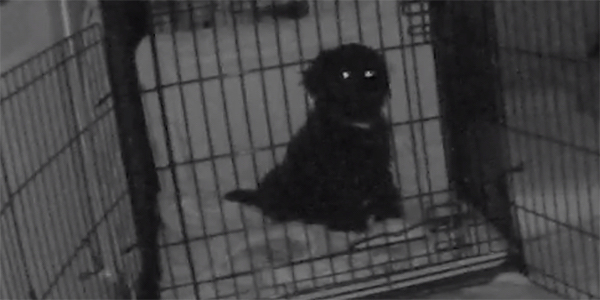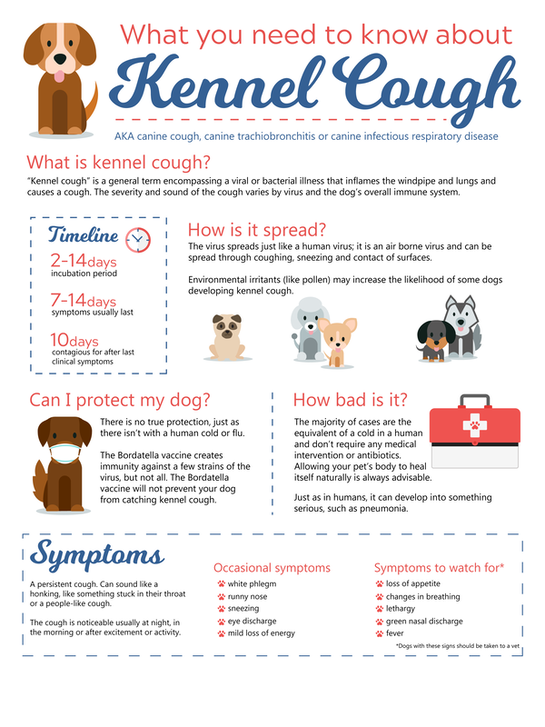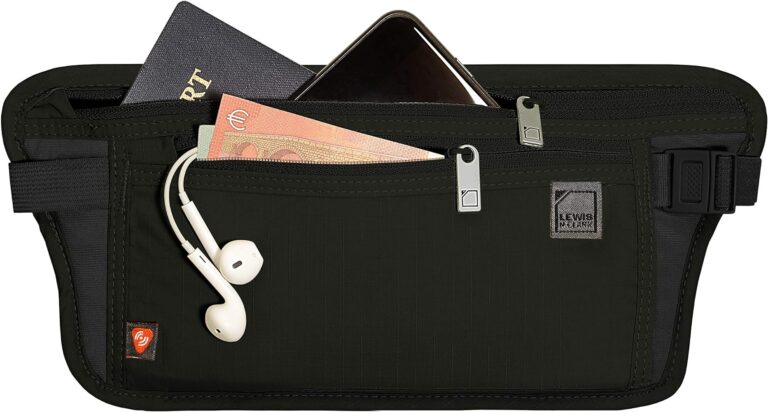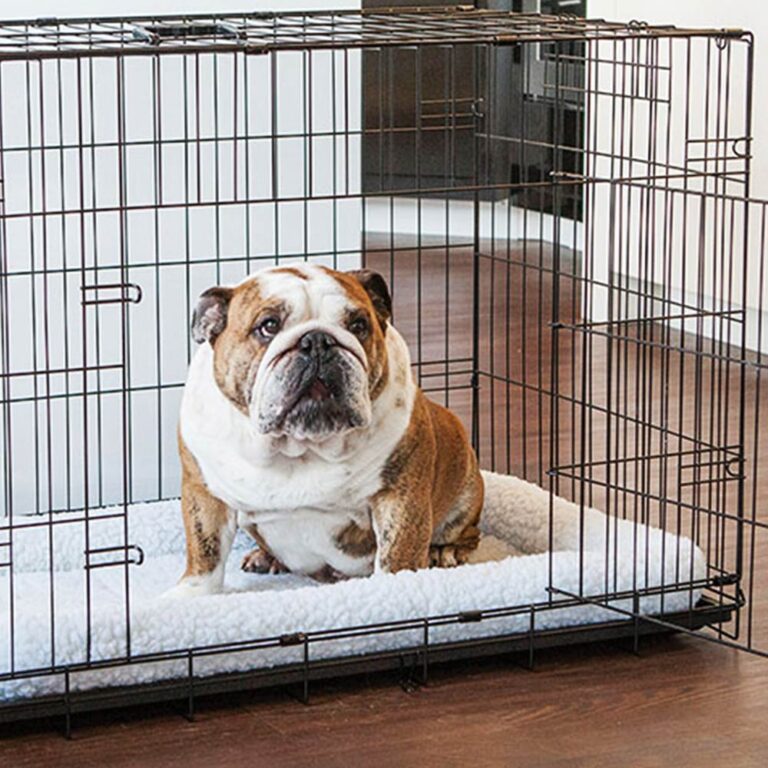Is It Safe to Crate Your Dog at Night?
Last Updated on September 9, 2024 by Petpalace54
Yes, it is okay to put your dog in a kennel at night as long as their physical and emotional needs are met. Kennels can provide a comfortable and secure sleeping space for your furry friend, but it’s important to make sure they have enough room to move around and access water throughout the night.
Many dog owners opt to use a kennel or crate as a training tool for their canines. With proper training, dogs can learn to see their kennels as a safe and comfortable place to relax and sleep. However, it’s important to remember that dogs are social animals and need plenty of interaction and exercise during the day.
A kennel should never be used as a substitute for attention and playtime with your furry friend. If you are considering using a kennel for your dog, make sure to do your research and speak with your veterinarian for guidance.
Table of Contents
Benefits Of Crate Training
If you’re a dog owner who is wondering whether or not it’s okay to put your dog in a kennel at night, you’re not alone. Many people have reservations about crate training, but it can actually be incredibly beneficial for both you and your furry friend. Here are just a few of the benefits of crate training:
Helps With House Training
One of the biggest benefits of crate training your dog is that it can help with house training. Dogs naturally try to avoid soiling in the space where they sleep, so by keeping them in a crate at night, you are teaching them to hold it until morning. This can drastically speed up the house training process and make your life as a dog owner much easier.
Provides A Secure Environment For Your Dog
Another important benefit of crate training is that it provides your dog with a secure and comfortable environment. Dogs are den animals by nature, which means that they feel safest and most secure in enclosed spaces. By giving your dog a crate that is just the right size for them, you are providing them with a space where they can feel safe and secure.
In conclusion, if you are looking for a way to speed up your dog’s house training and provide them with a safe and secure environment, crate training is definitely worth considering.

Credit: www.preventivevet.com
Factors To Consider Before Crate Training
Before crate training your furry friend, it’s essential to consider various factors to ensure their well-being. One of the most important things to keep in mind is the dog’s age and health. The size and comfort of the crate are also crucial factors that affect your dog’s crate training experience. Moreover, the length of time your pet spends inside the kennel also plays a significant role. Let’s look at each of these factors in detail.
Dog’s Age And Health
A dog’s age and health is an essential factor you need to consider before introducing crate training to them. Puppies younger than six months of age have smaller bladders and are more likely to have accidents inside the crate. While an adult and a healthy dog can hold their bladder for about six to eight hours, a dog’s health condition should also be considered.
If your furry friend has incontinence issues, then crate training may not be appropriate for them. Similarly, if your dog has severe separation anxiety, it may cause more harm than good to leave them in a crate. It’s crucial to consult a veterinarian to evaluate your dog’s health condition before deciding to crate train them.
Crate Size And Comfort
The size and comfort of the crate play a crucial role in the crate training process. Your dog’s crate size should be large enough to allow them to stand up, turn around, and lie down comfortably. However, it shouldn’t be too large to prevent your dog from having accidents inside the crate. It’s essential to choose a crate that is appropriate for your dog’s size and breed.
Furthermore, the comfort of the crate is equally important as the size. You can add some soft bedding, such as a blanket or a dog bed, to make the crate comfortable for your furry friend. Additionally, you can leave some of their favorite toys or treats inside the crate to make it a positive experience for them.
Length Of Time In Crate
The length of time your pet spends inside the crate is another crucial factor to consider. It’s recommended to start with short periods and gradually increase the time your furry friend spends in their kennel. Never leave your dog in a crate for an extended period. It’s essential to ensure they have access to food, water, and walks before and after being in a crate for an extended period.
In conclusion, crate training can be an effective way to provide your furry friend with a safe and cozy resting place. However, it’s essential to consider your dog’s age and health, crate size and comfort, and length of time they spend inside the crate before crate training them.
Crate Training Dos And Don’ts
Kennel training is a common method of crate training for dogs and can be a suitable solution for night-time confinement. However, it’s important to follow the dos and don’ts of crate training to make sure your furry friend is comfortable and safe.
In this section, we’ll look at some crate training dos and don’ts to help you make the most of crate training.Introduce The Crate Gradually
Introducing the crate gradually is key to crate training success. You don’t want your dog to feel trapped or confined, so it’s important to take things slowly. Start by placing your dog’s bed or blanket near the crate and let them explore the crate at their own pace. You can also reward them with treats when they enter the crate, helping them associate it with positive experiences.Don’t Use The Crate As Punishment
Using the crate as punishment is a big no-no when it comes to crate training. You don’t want your dog to associate the crate with negative experiences, as this will make crate training much more difficult. Instead, use positive reinforcement techniques to encourage your dog to enter the crate willingly.Provide Toys And Treats In The Crate
Providing toys and treats in the crate is a great way to make it a more inviting space for your dog. You can fill a treat toy with their favorite snacks, or provide them with a chew toy to keep them occupied. This will not only help them associate the crate with positive experiences, but it will also help keep them entertained during the night.In summary, crate training is an effective way to help your dog feel secure and comfortable at night, but it’s important to follow the dos and don’ts of crate training to make the experience as positive as possible. Gradually introducing the crate, avoiding using it as punishment, and providing toys and treats are essential steps to successful crate training.Nighttime Crating
Putting your dog in a kennel at night can be a safe way to provide a cozy and private space for them to sleep. However, it’s important to make sure they are comfortable and have access to water and toys to prevent anxiety and boredom.
Nighttime Crating is a popular practice among dog owners, but many of them often wonder whether it is ok to put their dogs in the kennel at night. The answer may vary depending on the dog’s age, temperament, and overall health. However, some experts suggest that crating at night can help dogs feel secure and prevent destructive behaviors such as chewing and digging. In this blog post, we will focus on the subheading: Nighttime Crating, and discuss three essential tips for making the experience as comfortable as possible for your furry friend.Create A Comfortable Sleeping Space
Your dog’s crate should be a cozy and inviting space that they will look forward to sleeping in. Start by choosing a crate that is the appropriate size for your dog. Make sure that they have enough room to stand up, turn around, and lie down comfortably. Additionally, add a soft blanket, bedding, and toys to make the crate feel more like a den than a cage. This can help alleviate any discomfort or anxiety and create a positive association with the crate.Establish A Bedtime Routine
Just like humans, dogs thrive on routine. Establishing a bedtime routine can help your dog feel more relaxed and secure when it is time to sleep. Start by taking your dog on a short walk before bedtime to help them burn off any excess energy. Then, offer them food and water, followed by some calming activities such as gentle petting or cuddling. Finally, always make sure that your dog has had a chance to go potty before settling down for the night.Gradually Increase Crate Time At Night
If your dog is new to crating, it is essential to introduce it gradually to avoid any stress or anxiety. Start by placing your dog in the crate for short periods during the day while you are home. Gradually increase this time, providing your dog with treats and positive reinforcement throughout the process. Once your dog has adjusted to being in the crate during the day, you can start introducing crating at night. Begin by placing your dog in the crate for short periods at night and gradually increase the time as they become more comfortable.In conclusion, crating your dog at night is a personal choice that should be made based on your dog’s needs and preferences. However, by following these three tips, you can create a comfortable and positive sleeping environment for your furry friend. Remember that every dog is different, so it is essential to be patient, understanding, and adapt to their specific needs.Alternatives To Crating At Night
Putting your dog in a kennel at night can sometimes be stressful for both you and your furry friend. Luckily, there are alternatives to crating such as providing a cozy bed, using a baby gate or a playpen, or leaving them in a secure room with access to basic necessities.
When it comes to our furry friends, we all want them to be as comfortable and safe as possible, especially during the nighttime. While some pet owners believe that crating is the best solution for nighttime, others worry about their pets’ wellbeing. Luckily, there are several alternatives to crating at night that may help your dog feel more relaxed and secure.Using A Dog Bed Or Kennel
One of the most straightforward alternatives to crating at night is to offer your pet a cozy and comfortable bed in their own designated sleeping space. Providing kennel-trained dogs with their familiar kennels can make them feel safe and secure and help them fall asleep faster.If your dog is not used to sleeping in a kennel, you can try placing their bed or mat in a quiet and calm area, such as the corner of your bedroom. Keep in mind that the size of the bed should be appropriate for your dog’s breed and size. For instance, if you have a larger breed like a German Shepherd, you’ll need to provide a larger bed.Baby Gates As Boundaries
If you don’t want to use a kennel, consider using baby gates to provide boundaries for your furry friend. Set up the gates in an area where your dog can play, relax, and sleep. You can place their bed, toys, and water in this area.Be sure to choose a space in your home that is quiet and comfortable, away from any potential dangers or distractions. This will create a safe and secure area for your pet during the night, ensuring that both you and your furry friend get a good night’s rest.Dog-safe Room Or Space
Another alternative to crating at night is to provide a room or designated space for your dog to sleep. This area needs to be dog-friendly, safe, and secure. You can use a spare room, laundry room, or even a closet as a comfortable and safe sleeping area.Ensure that this area is thoroughly dog-proofed and free of any items that could potentially harm your furry friend, such as household chemicals or electrical cords. Provide a comfortable bed, toys, and water to ensure that your pet feels comfortable and secure in their designated space.In conclusion, while crating may be a popular choice for pet owners, it’s not the only solution. By providing alternative options such as a comfortable bed or kennel, baby gates as boundaries, or a designated dog-safe room or space, you can help your furry friend feel relaxed, safe and secure during the nighttime.Credit: www.quora.com
Common Concerns And Solutions
As a dog owner, you may feel unsure about putting your furry friend in a kennel at night. However, kennels can provide a safe and comfortable sleeping environment for your pup while also helping with training and preventing destructive behavior. Let’s look at some common concerns and solutions when it comes to kenneling your dog at night.
Separation Anxiety
Some dogs may experience separation anxiety when left alone in a kennel at night. This can result in excessive barking, destructiveness, and even self-injury. To help your dog adjust to being in a kennel at night, gradually increase the amount of time they spend in the kennel during the day. Use positive reinforcement, such as treats and toys, to make the experience more enjoyable for your pup. Additionally, keep the kennel in a quiet, comfortable location where your dog can see and smell you.
Barking Or Whining In The Crate
Dogs that bark or whine in a crate can disturb your sleep or that of your neighbors. This behavior may be due to anxiety, boredom, hunger, or discomfort. To prevent barking or whining in the kennel at night, make sure your dog has had plenty of exercise and mental stimulation during the day. Additionally, provide your dog with a comfortable bed and toys to keep them occupied. Covering the kennel with a blanket or towel can also create a den-like environment that may help reduce anxiety.
Accidents In The Crate
It can be frustrating and messy if your dog has accidents in the kennel at night. This behavior may be due to a medical issue, anxiety, or not being properly house trained. Make sure your dog has gone outside to pee and poop before being put in the kennel at night. Also, ensure that the kennel is appropriately sized for your dog and that they have enough space to turn around, lay down, and stretch. Avoid putting bedding or material in the kennel that your dog may be tempted to chew or destroy.
Overall, kenneling your dog at night can be an excellent way to keep them safe and comfortable while also providing them with structure and discipline. When done correctly, the kenneling experience can help reduce separation anxiety, barking, and accidents while promoting good behavior and routine.

Credit: news.orvis.com
Frequently Asked Questions Of Is It Ok To Put Your Dog In A Kennel At Night
Is It Okay To Put Your Dog In A Crate At Night?
Yes, it’s okay to put your dog in a crate at night as long as it’s done properly and the crate is comfortable and safe for the dog. The crate should be big enough for the dog to stand up, turn around, and lie down comfortably.
The crate should also be placed in a quiet and secure location.
Where Should A Dog Sleep At Night?
Dogs can sleep in a designated bed or crate in a quiet area of the house. It’s important for their safety and comfort to limit access to high traffic areas. For small dogs, a crate or kennel is a good option while larger dogs may prefer a dog bed to spread out.
Can My Dog Sleep In The Kennel?
Yes, your dog can sleep in a kennel as long as it is spacious, comfortable and safe. Make sure that your dog has enough room to stand up, lie down, and turn around comfortably. The kennel should also be well-ventilated, clean, and secure.
Providing comfortable bedding and toys can also help your dog feel more at ease.
Why Do People Put Their Dogs In Kennels At Night?
People put their dogs in kennels at night for safety and security purposes. Dogs are kept in kennels to avoid them from wandering off, damaging properties, or causing harm to themselves and others. Also, kennels offer a comforting place for dogs to sleep peacefully and comfortably.
Conclusion
Overall, putting your dog in a kennel at night can be a safe and comfortable option for both you and your furry friend. However, it is important to make sure your dog has enough space to move around, access to food and water, and proper ventilation.
Additionally, providing your dog with enough physical activity and mental stimulation during the day can also help them feel more at ease in their kennel at night. Ultimately, the decision to use a kennel should be based on your individual dog’s needs and preferences.




